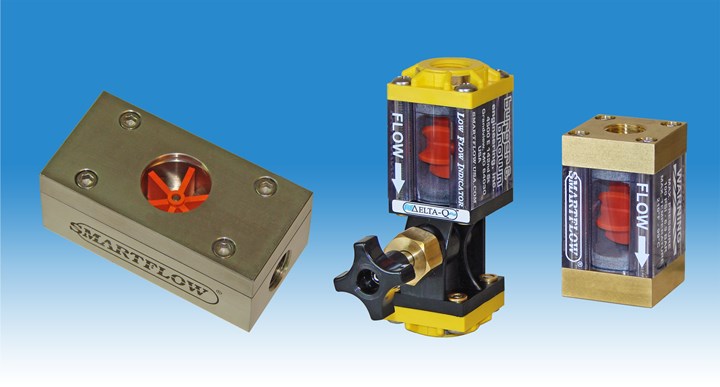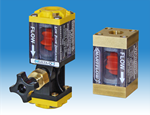Low-Flow Indication and Metering in Injection Mold Cooling
NPE2024: Burger & Brown launches standard- and high-temperature Smartflow low-flow indicators, as well as a low-flow electronic flow meter.
Burger & Brown Engineering is introducing new Smartflow low-flow indication and metering products for use in injection mold cooling. The low-flow indicators come in standard- and high-temperature versions, and the updated Smartflow low-flow electronic flow meter incorporates a new sensor that enables high-temperature capabilities, analog outputs and programmable alarm functions.
The low-flow indicators and meters are designed for flow rates between 0.3 and 4 liters/min (0.08 and 1 gpm). Operating pressure and temperature limits reach 250 psi at 204°C (400°F). The new standard temperature indicators are designed for cooling circuits between 1/4 and 1/2 inch, with high-temperature and high-pressure units available with 3/8-inch threaded connections.
The low-flow indicators and meters enable molders to confirm the movement of cooling flow in complex tooling with small passages such as those with bubblers or baffles. They can also work with conformal cooling circuits featuring internal restrictions where flow is critical to ensure robust cooling for molded part quality and fast cycles.
Burger & Brown notes that plastic injection molds are trending toward more complex designs, featuring restricted cooling passages. In addition, the company says the automotive lightweighting trend has resulted in more use of temperature-sensitive engineering resins in a bid to replace metal with high-performance plastics. Burger & Brown says these trends mean greater visibility into cooling passages with extremely low flow rates and high-temperature operational requirements is necessary.

Burger & Brown Engineering will update its Smartflow line of low-flow indication and metering products at NPE2024. Source: Burger & Brown Engineering
Related Content
-
Back to Basics on Mold Venting (Part 2: Shape, Dimensions, Details)
Here’s how to get the most out of your stationary mold vents.
-
A Systematic Approach to Process Development
The path to a no-baby-sitting injection molding process is paved with data and can be found by following certain steps.
-
How to Reduce Sinks in Injection Molding
Modifications to the common core pin can be a simple solution, but don’t expect all resins to behave the same. Gas assist is also worth a try.













